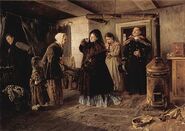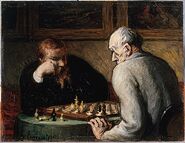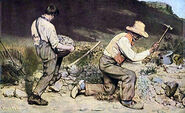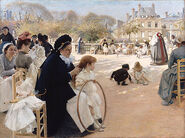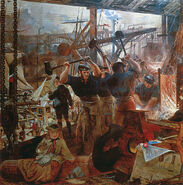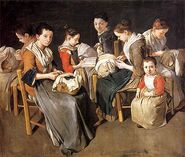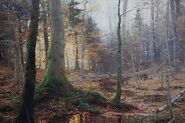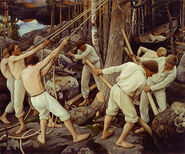m (→Artists) Tag: Source edit |
No edit summary Tag: Visual edit |
||
| Line 1: | Line 1: | ||
| − | {{Aesthetic|decade_of_origin = 1840s|image1 = 1*CmhZE5k9xkE8g5Ojiy5CMw.jpeg|related_aesthetics=[[Art Academia]]<br>[[Photorealism]]}}'''Realism''' was an artistic movement that emerged in France in the 1840s, around the 1848 Revolution. Realists rejected Romanticism, which had dominated French literature and art since the early 19th century. |
+ | {{Aesthetic|decade_of_origin = 1840s|image1 = 1*CmhZE5k9xkE8g5Ojiy5CMw.jpeg|related_aesthetics=[[Art Academia]]<br>[[Photorealism]]|key_motifs=|key_values=rejection of [[Romanticism]]}}'''Realism''' was an artistic movement that emerged in France in the 1840s, around the 1848 Revolution. Realists rejected Romanticism, which had dominated French literature and art since the early 19th century. |
Realists used unprettified detail depicting the existence of ordinary contemporary life, coinciding in the contemporaneous naturalist literature of Émile Zola, Honoré de Balzac, and Gustave Flaubert. |
Realists used unprettified detail depicting the existence of ordinary contemporary life, coinciding in the contemporaneous naturalist literature of Émile Zola, Honoré de Balzac, and Gustave Flaubert. |
||
Revision as of 23:39, 18 June 2021
Realism was an artistic movement that emerged in France in the 1840s, around the 1848 Revolution. Realists rejected Romanticism, which had dominated French literature and art since the early 19th century.
Realists used unprettified detail depicting the existence of ordinary contemporary life, coinciding in the contemporaneous naturalist literature of Émile Zola, Honoré de Balzac, and Gustave Flaubert.
Realism is the precise, detailed and accurate representation in art of the visual appearance of scenes and objects. Realism in this sense is also called naturalism, mimesis or illusionism.
Realistic art was created in many periods, and it is in large part a matter of technique and training, and the avoidance of stylization.
Artists
Many artists have made realist works of art. This list contains a few people who are well-known for it.
- Jean-Baptiste-Camille Coro
- Gustave Courbet
- Honoré Daumier
- Henri Fantin-Latour
- Édouard Manet
- Jean-François Millet

